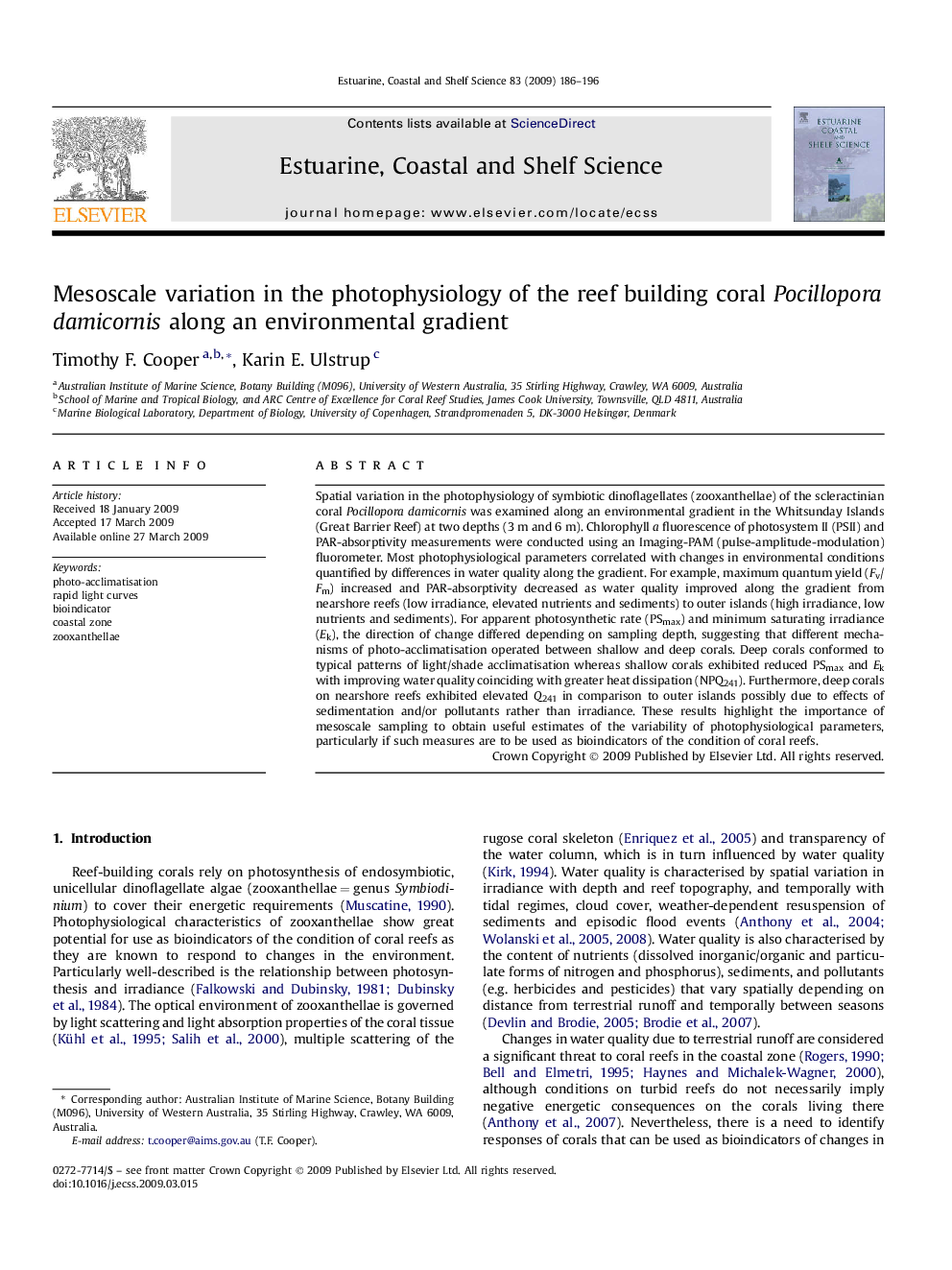| Article ID | Journal | Published Year | Pages | File Type |
|---|---|---|---|---|
| 4541301 | Estuarine, Coastal and Shelf Science | 2009 | 11 Pages |
Spatial variation in the photophysiology of symbiotic dinoflagellates (zooxanthellae) of the scleractinian coral Pocillopora damicornis was examined along an environmental gradient in the Whitsunday Islands (Great Barrier Reef) at two depths (3 m and 6 m). Chlorophyll a fluorescence of photosystem II (PSII) and PAR-absorptivity measurements were conducted using an Imaging-PAM (pulse-amplitude-modulation) fluorometer. Most photophysiological parameters correlated with changes in environmental conditions quantified by differences in water quality along the gradient. For example, maximum quantum yield (Fv/Fm) increased and PAR-absorptivity decreased as water quality improved along the gradient from nearshore reefs (low irradiance, elevated nutrients and sediments) to outer islands (high irradiance, low nutrients and sediments). For apparent photosynthetic rate (PSmax) and minimum saturating irradiance (Ek), the direction of change differed depending on sampling depth, suggesting that different mechanisms of photo-acclimatisation operated between shallow and deep corals. Deep corals conformed to typical patterns of light/shade acclimatisation whereas shallow corals exhibited reduced PSmax and Ek with improving water quality coinciding with greater heat dissipation (NPQ241). Furthermore, deep corals on nearshore reefs exhibited elevated Q241 in comparison to outer islands possibly due to effects of sedimentation and/or pollutants rather than irradiance. These results highlight the importance of mesoscale sampling to obtain useful estimates of the variability of photophysiological parameters, particularly if such measures are to be used as bioindicators of the condition of coral reefs.
